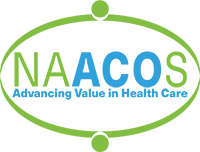|
News Release Contact: Medicare Accountable Care Organizations Generated $1.7 Billion in Savings Last Year National Association of ACOs Calls on CMS to Grow Participation and Sustain Savings Potential WASHINGTON – The Medicare Shared Savings Program, the accountable care organization (ACO) model serving nearly 11 million seniors and the dominant value-based care program in Medicare, continued its trend of lowering the rate of Medicare spending while providing high-quality care, as evidenced by 2018 performance data released today by the Centers for Medicare & Medicaid Services (CMS). ACOs collectively saved Medicare $1.7 billion last year alone, and $739 million after accounting for shared savings bonuses and collecting shared loss payments. The results continue a strong and growing trend of the Medicare ACO program saving money. Results for all 2018 Shared Savings Program ACOs, which compare the year’s spending to pre-set spending targets, are available in an online public use data file. “These numbers put to rest any notion that ACO savings are ‘modest’ and illustrate the strong performance of the leading Medicare alternative payment model,” said Clif Gaus, Sc.D., president and CEO of the National Association of ACOs (NAACOS). "Given time, we know ACOs save money and provide benefit for patients and taxpayers." “Recent data from CMS indicate a potential drop in ACO participation. Today’s results prove the Shared Savings Program was doing very well before last year’s changes by CMS,” Gaus said. "We should work to find ways to encourage ACO participation, which as evidenced by these results helps improve our health care system and the future of Medicare." In 2018, 548 Shared Savings Program ACOs cared for 10.1 million beneficiaries. According to CMS data for that year, 66 percent of ACOs saved Medicare money, compared to CMS-set spending targets or benchmarks, and 37 percent saved enough money to earn shared savings bonuses. Both of these numbers are increases from previous years. According to CMS Administrator Seema Verma, ACOs that received shared savings payments had decreases in inpatient, emergency room, and post-acute care spending and utilization. ACOs in both shared savings-only and risk-based models showed reductions in spending per beneficiary relative to their benchmarks. Other key data points from today’s CMS data:
Comparing ACO performance to CMS-set benchmarks isn’t even the best way to judge ACO performance. A better metric is “counterfactual” data that compares Medicare spending to what spending would be like in the absence of ACOs. Researchers at Harvard University, the Medicare Payment Advisory Commission and NAACOs have all done such work. All showed ACOs are lowering Medicare spending by 1 percent to 2 percent, which translates into tens of billions of dollars of reduced Medicare spending when compounded annually. |
